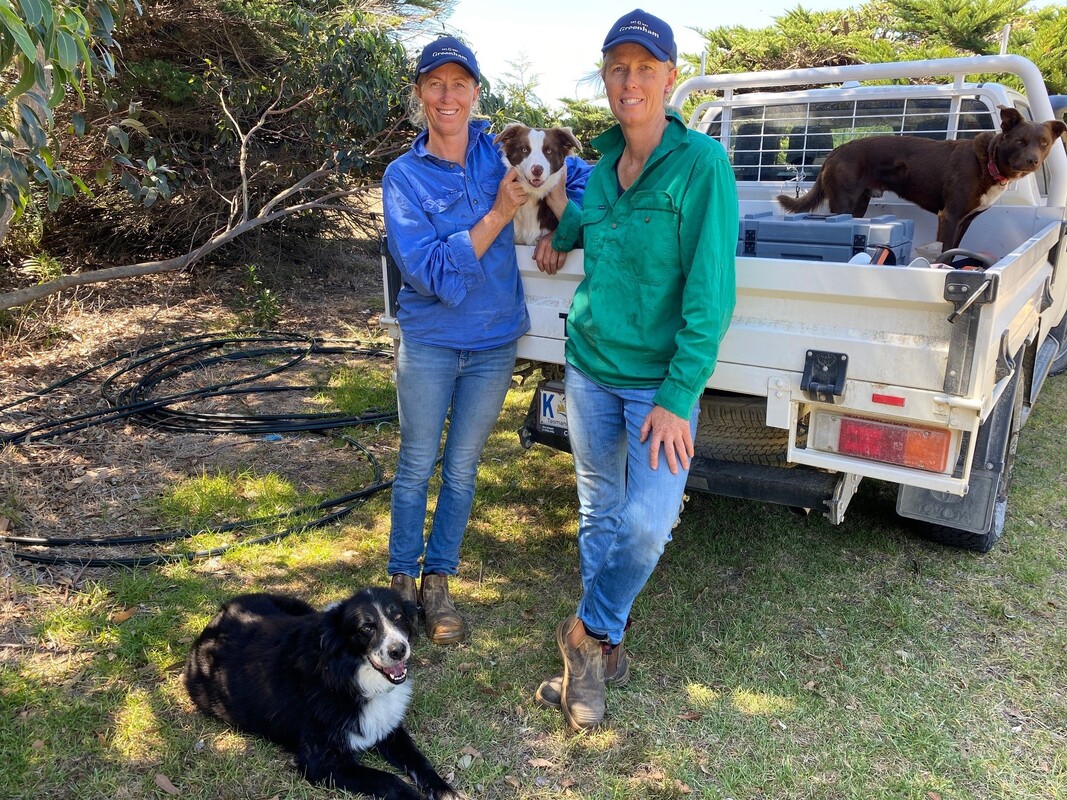For upper Murray cattle producers Linda and Gary Nankervis, joining the pilot of the ABSF-inspired Greenham Beef Sustainability Standard (GBSS) was about more than environmental benefits alone; productivity, profitability, and training were the final pieces of the puzzle.
Providing a practical set of indicators to enhance and showcase sustainable practices across Greenham’s supply chain, the optional on-farm GBSS was developed in response to growing market demand for robust and transparent environmental credentials.
With support from project partner, Meat & Livestock Australia (MLA) the third-party audited standard was piloted in 2022 with 21 cattle producers from a range of production systems across southern Australia, including the Nankervis family.
The pilot represents the first time a commercial supply chain has applied the themes identified in the Australian Beef Sustainability Framework (ABSF) – environmental stewardship, animal welfare, economic resilience, and people and the community – at a farm level to deliver a new product to market.
Before joining the pilot, Linda said it was vital the GBSS was in step with their existing business strategy and values.
“Everything in the GBSS is just good management,” she said.
“We want to be right at the forefront of industry, running as efficiently and sustainably as we can so we can stay here and keep doing what we’re doing.”
Joined by their son Joe, Linda and Gary have been running the self-replacing Angus herd at the 1,100ha ‘The Ranch’ near Corryong in Victoria for almost 30 years, but the property has been in Gary’s family for more than 50 years.
During the pilot, the Nankervis’ found they were already aligned with a number of the standard’s requirements.
Effective pasture management and 100% ground cover had long been a cornerstone of the family operation with a mix of natural and introduced grasses, which are rotationally grazed at set intervals depending on seasonal conditions.
“The standard provides structure and incentivises some of those activities or improvements that have been in the pipeline for a while, like improving biodiversity in a way that benefits our property,” Linda said.
The standard is broken up into three tiers with tier one prioritising education and planning, it sets a baseline for sustainable management, while tiers two and three focus on continuous improvement, striving for optimum ecological health and carbon neutrality.
“Not all of the indicators are easy to reach – from where we are today it will be a challenge to reach carbon neutrality (a tier three indicator) as our current business model targets 400-day growth, so the size of our mature cows is a problem, but we’ve completed the carbon accounting training and now have a starting point,” Linda said.
“We see it as a long-term goal…it gives us something to benchmark against.”
A focus on sustainability is both an ethical and commercial decision for Linda and Gary.
“We’re at the coal face of a changing environment…ethically we want to leave the land in a better state than we found it,” Linda said.
“Change is led by the consumer, and we want to produce high-quality beef that connects consumers to their desire to live sustainably.”
The GBSS is endorsed by agricultural and environmental consultants, Integrity Ag & Environment, and US-based animal welfare program, Certified Humane®.
The standard will be incrementally rolled out to Greenham’s broader supply chain over the next two years, providing another market option for Greenham cattle suppliers.
Beef sourced from properties that meet at least tier two of the standard is eligible for an on-pack Certified Regenerative® label and associated financial incentives.
To access the new carbon e-learning modules developed to demystify on-farm carbon management, and other stocking rate and feedbase planning tools, go to elearning.mla.com.au













